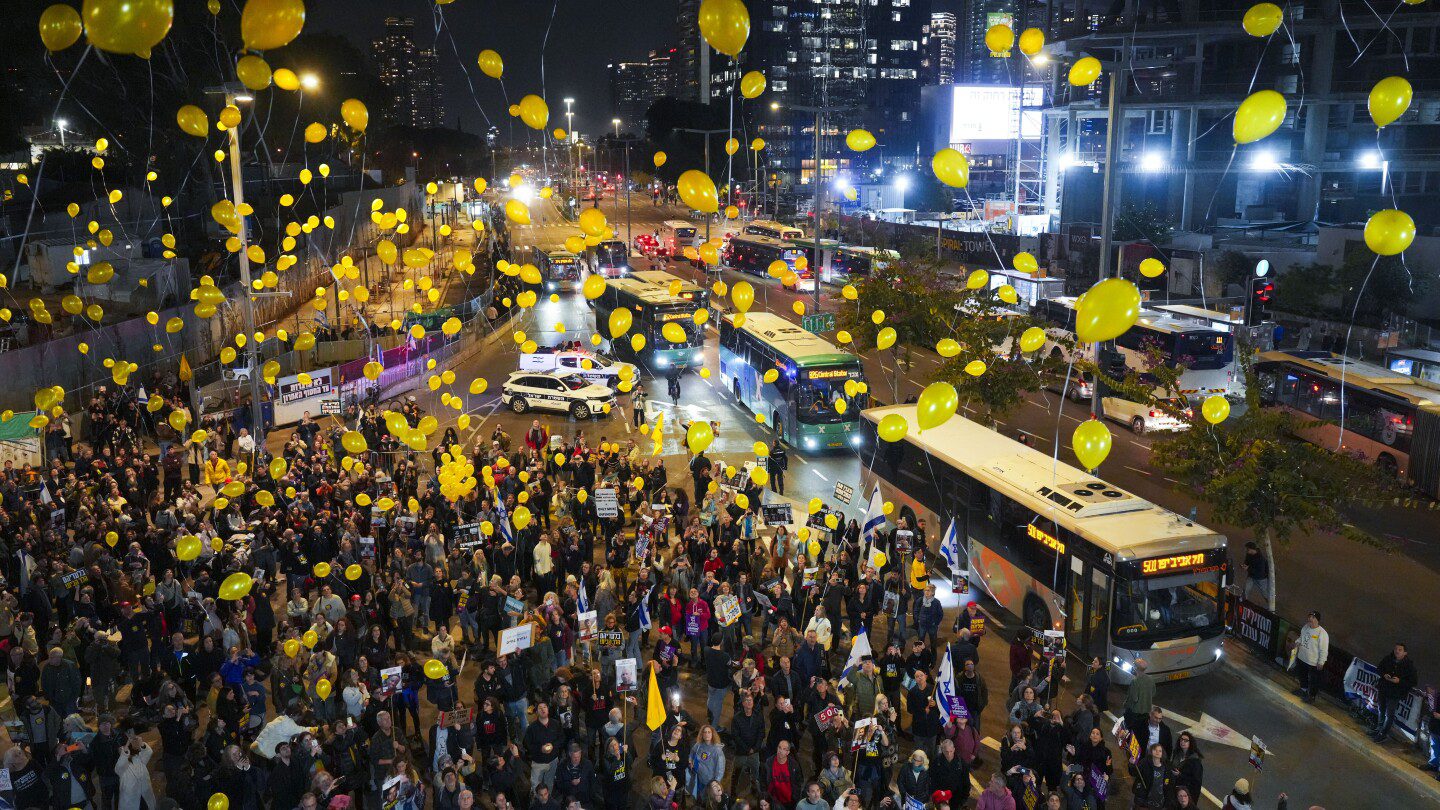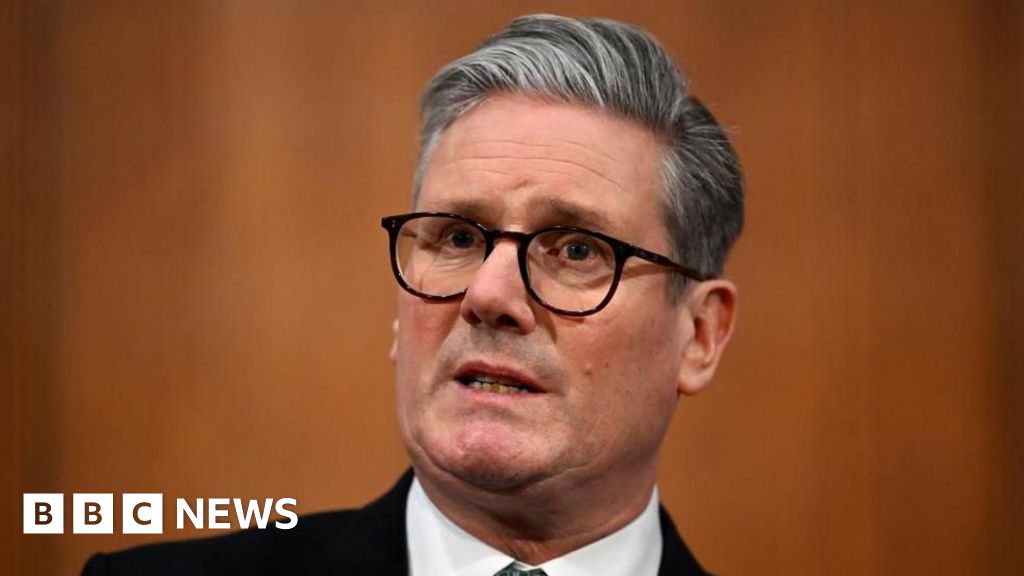
JERUSALEM (AP) — The Israel Defense Forces have announced that their troops will remain stationed at five key sites in southern Lebanon, despite a ceasefire deadline with the Hezbollah militant group that was set for Tuesday. This decision has led to frustrations within the Lebanese government due to yet another delay in the withdrawal process.
Concerns grow over a concurrent ceasefire in Gaza, particularly as the region observes 500 days of conflict between Israel and Hamas. Complicating matters, Israel and the United States have issued mixed communications regarding their desires for the truce to continue, with discussions regarding the subsequent phase of the ceasefire still not commenced.
Military spokesperson Lt. Col. Nadav Shoshani explained that these five locations in Lebanon offer tactical advantages and provide oversight for nearby Israeli communities, where approximately 60,000 residents remain displaced. He indicated that this “temporary measure” had received approval from the U.S.-led truce monitoring group, which had previously extended the ceasefire by three weeks.
According to the ceasefire agreement, Israeli forces were expected to pull back from a designated buffer area in southern Lebanon, which will now be overseen by both the Lebanese military and U.N. peacekeeping forces. The truce has been effective since it was implemented in November.
Israel is dedicated to carrying out the withdrawal in a “proper, gradual manner that ensures the security of our citizens,” Shoshani emphasized during a press conference.
Lebanese President Joseph Aoun reiterated the necessity of adhering to the ceasefire, remarking that “the Israeli enemy can’t be trusted,” and indicated that Lebanese officials are pursuing diplomatic channels for a swift withdrawal. Meanwhile, Hezbollah leader Naim Kassem stressed that there should be “no excuses” for any postponements beyond Tuesday.
Hezbollah intensified hostilities by launching rockets, drones, and missiles into Israel just a day after Hamas’s attack on October 7, 2023, which sparked the ongoing conflict. The clash escalated into a full-scale war by September, as Israel executed extensive air campaigns, resulting in the deaths of many senior Hezbollah officials.
Earlier on Monday, the Israeli military reported that a drone strike had eliminated Muhammad Shaheen, the head of Hamas’s operations in Lebanon. This strike in the city of Sidon marked the furthest incursion into Lebanese territory since the ceasefire began. Footage from the Associated Press depicted a burned-out vehicle as a result of the strike.
“Fear has returned to the community,” shared Sidon resident Ahmed Sleim, who expressed concerns about a possible resurgence of conflict.
500 Days of War in Gaza
In Israel, there have been demonstrations advocating for the extension of the ceasefire in Gaza, aiming to facilitate the release of hostages taken during the October 7 attack.
An Israeli official indicated that four bodies are expected to be returned to Israel on Thursday, though no further details were disclosed, as arrangements were still being finalized. So far, no bodies have been returned during the current phase of the ceasefire. Hamas has not offered immediate comments regarding this situation.
Israeli authorities believe that out of 33 individuals anticipated to be returned in the first phase of the ceasefire, eight are likely deceased. Hamas is progressively releasing these 33 individuals in exchange for nearly 2,000 Palestinian prisoners. Israeli forces have mostly withdrawn from Gaza, allowing an influx of humanitarian aid.
This initial phase will conclude in less than two weeks, and discussions for the second, more complex phase—which is expected to address more hostage releases and the withdrawal of Israeli forces from Gaza—were meant to commence two weeks ago.
“What I long for, above all, is for my friends to come home. We endured unbearable conditions, with six of us stuck there,” said Ohad Ben Ami, who was released a week and a half ago, in a conversation with Israeli President Isaac Herzog. Families have reported that their loved ones have been held captive barefoot or in chains.
“It’s simply not conceivable that they’re still there,” asserted Eleanor Satlow, a protester in Jerusalem. Others demonstrated in Tel Aviv, where recently freed hostage Iair Horn urged, “I assure you, there isn’t much time for the hostages—we don’t have time left.” His brother Eitan remains in Gaza.
During the upcoming second phase, Hamas is expected to release over 70 hostages, many of whom are feared to be dead, in exchange for more Palestinian prisoners and the establishment of a lasting ceasefire.
Israeli Prime Minister Benjamin Netanyahu and U.S. President Donald Trump have expressed commitment to both eliminating Hamas and securing the return of all hostages, a stance regarded by many as fundamentally conflicting.
Despite having lost significant ground, the militant organization still retains control over Gaza. Hamas has conveyed willingness to hand over power to other Palestinian factions but has firmly stated it will not accept any occupying force.
Israel Welcomes Trump’s Proposal
Trump has proposed relocating Gaza’s over 2 million residents to other nations and has suggested the U.S. should take ownership of the territory. Israel has expressed support for this plan, while Palestinians and various Arab states have dismissed it. Human rights organizations warn that executing this proposal could contravene international law.
In response, Egypt is developing a counter-proposal to rebuild Gaza without necessitating the relocation of its residents.
During the October 7 attack orchestrated by Hamas, approximately 1,200 individuals, predominantly civilians, were killed, and around 250 were abducted. Over half of the hostages have since been returned, with eight rescued via military operations.
Israel’s ongoing air and ground offensives have resulted in over 48,000 Palestinian fatalities, of whom more than 50% are reported to be women and children, according to Gaza’s Health Ministry, which has not specified the number of combatants among the dead.
“Gaza is devastated; nothing remains suitable for living,” remarked resident Mohammed Barash, reflecting on the toll of 500 days of warfare.
Accelerated Settlement Expansion Expected
A watchdog organization opposing Israeli settlements in Palestinian territories has reported that Israel has initiated plans for the construction of nearly 1,000 new settler homes in the occupied West Bank.
Peace Now indicated that this addition of 974 housing units would lead to a 40% increase in the population of the Efrat settlement, further hindering the growth of the adjacent Palestinian city of Bethlehem.
No immediate response has been provided by the Israeli government regarding these developments.
Israel has established over 100 settlements throughout the West Bank, comprised of both hilltop outposts and fully developed communities—housing more than 500,000 settlers in a region where about 3 million Palestinians reside.
Settlers possess Israeli citizenship, while Palestinians live under military governance, with the Western-backed Palestinian Authority managing urban centers.
The territories of the West Bank, Gaza Strip, and East Jerusalem were captured by Israel during the 1967 Middle East War, and Palestinians seek to claim these lands for a future state.
___
Abou AlJoud reported from Beirut. Associated Press journalists Wafaa Shurafa in Deir al-Balah, Gaza Strip, and Josef Federman in Jerusalem contributed to this article.
___
Stay informed with AP’s coverage of the ongoing conflict at https://apnews.com/hub/israel-hamas-war









